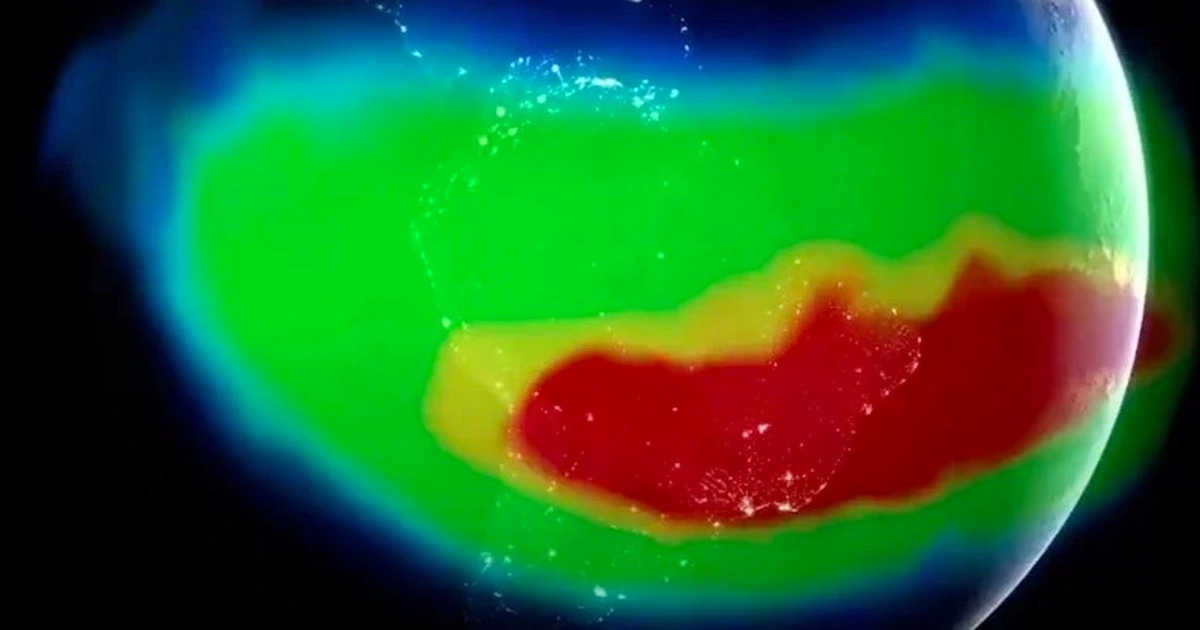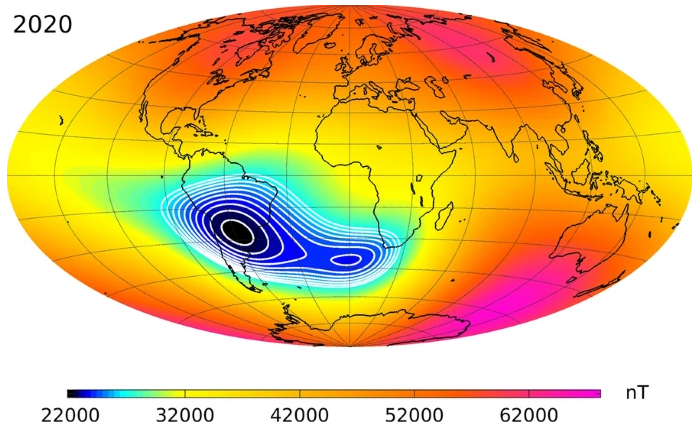NASA is actively observing an amazing anomaly in the Earth’s magnetic field. This is a giant area of magnetic intensity stretching between South America and southwest Africa. This phenomenon is known as the South Atlantic Anomaly. It has intrigued and alarmed NASA scientists for years.

NASA compares the South Atlantic anomaly with a “dent” in the Earth’s magnetic field or a kind of “pothole in space”, which generally does not affect life on Earth. But spacecraft passing directly through the anomaly, orbiting the planet in low Earth orbit, suffer from it. The fact is that satellites and the International Space Station are particularly vulnerable to the weakened magnetic field strength inside the anomaly and, as a result, receive a more intense influence of charged particles from the Sun.
High-energy protons originating from the Sun hit the technological systems on board the satellites and can disable them. These accidental hits can usually lead to only minor failures, but they carry the risk of causing significant data loss or even irreversible damage to key components – threats that force satellite operators to regularly turn off spacecraft systems before spacecraft enter the anomaly zone. Mitigating these dangers in space is one of the reasons why NASA is so actively monitoring the phenomenon.
Source of the anomaly
The flip side of the coin is that the mystery of the anomaly is an excellent opportunity to explore a complex and difficult to understand phenomenon, and NASA’s extensive resources and research teams have unique opportunities to study this phenomenon.

The main source is considered to be a swirling ocean of molten iron inside the outer core of the Earth, at a depth of thousands of kilometers. The movement of this mass creates an electric current that generates the Earth’s magnetic field. But this magnetic field is not necessarily homogeneous. A huge storage of dense rocks called the African Large Low Shear Velocity Province, located about 2,900 kilometers below the African continent, disrupts the generation of the field, which leads to its weakening effect, which is facilitated by the tilt of the planet’s magnetic field.
Magnification and splitting in two
Despite the fact that scientists still do not fully understand this anomaly and its consequences, new ideas are constantly shedding light on this strange phenomenon. For example, one study led by NASA heliophysicist Ashley Greeley in 2016 showed that the South Atlantic anomaly is slowly drifting in a northwesterly direction. However, this is not just a movement. Even more remarkable, the phenomenon seems to be in the process of splitting in two. The researchers have found that the anomaly increases and gradually divides into two separate “cells”, each of which represents a separate center of minimal magnetic intensity within the larger anomaly.
What this means for the future of SAA remains unknown. But in any case, there is evidence that this anomaly is not new. A study published in 2020 showed that this phenomenon was not a unique modern event, but could have affected the Earth as early as 11 million years ago. Scientists are also confident that the South Atlantic anomaly is not a trigger or a harbinger of a reversal of the magnetic field of the entire planet.
According to Sciencealert
Follow us on Twitter to get the most interesting space news in time
https://twitter.com/ust_magazine

